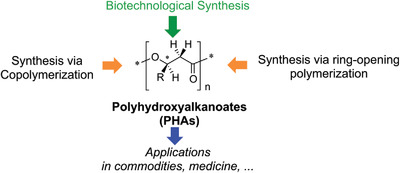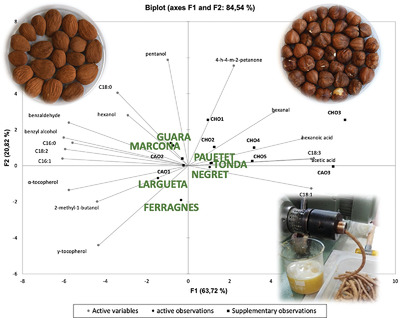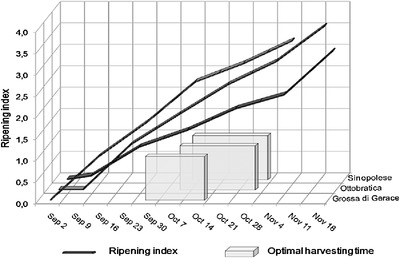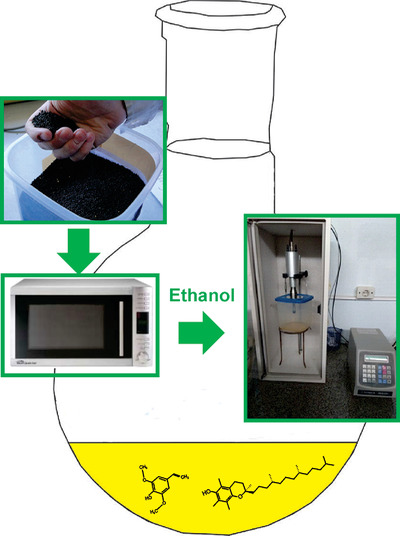Journal list menu
Export Citations
Download PDFs
Cover Picture
Cover Picture: Eur. J. Lipid Sci. Technol. 11/2019
- First Published: 04 November 2019
Editorial Board
Editorial Board: Eur. J. Lipid Sci. Technol. 11/2019
- First Published: 04 November 2019
Contents
Review
Polyhydroxyalkanoates: Recent Advances in Their Synthesis and Applications
- First Published: 20 September 2019
Research Articles
Comparison of Nile Red and Cell Size Analysis for High-Throughput Lipid Estimation Within Oleaginous Yeast
- First Published: 17 September 2019
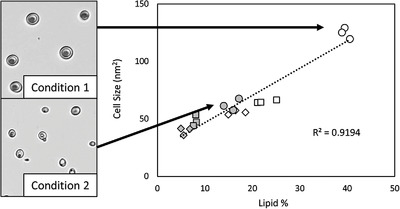
Cell size analysis correlates with traditional lipid extractions to give an accurate and reliable high-throughput method of lipid estimation in oleaginous yeast. Data presented shows the same strain grown in low (Condition 1, clear circles) and high (Condition 2, filled circles) nitrogen concentrations. A correlation is not seen between Nile red and lipid extractions due to issues of stain permeation.
Omega-3 and Polyunsaturated Fatty Acids-Enriched Hamburgers Using Sterol-Based Oleogels
- First Published: 28 August 2019

The introduction of oleogels as saturated fat replacers in pork patties are shown to be a very promising approach to implement the tailoring of fatty acid profile of hamburgers. This is an encouraging outcome toward the tackling of obesity and cardiovascular diseases which are among the most worrying health problems worldwide.
Chemical Characterization of Virgin Almond and Hazelnut Oils and Their By-Products
- First Published: 13 September 2019
A Method for Analyzing Fatty Acids in Cattle Hair, with Special Emphasis on Lauric Acid and Myristic Acid
- First Published: 18 September 2019
Integrated Study of Qualitative Olive and Oil Production from Three Important Varieties Grown in Calabria (Southern Italy)
- First Published: 19 September 2019
Canola Oil with High Antioxidant Content Obtained by Combining Emerging Technologies: Microwave, Ultrasound, and a Green Solvent
- First Published: 09 September 2019
Cardiac Lipid Metabolism Is Modulated by Casimiroa edulis and Crataegus pubescens Aqueous Extracts in High Fat and Fructose (HFF) Diet-Fed Obese Rats
- First Published: 29 August 2019
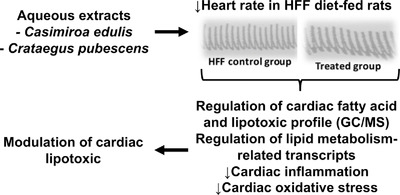
Casimiroa edulis and Crataegus pubescens aqueous extracts (2%) decrease cardiac frequency, hypertrophy, and steatosis in obese rats. C. pubescens modulates cardiac fatty acid, diacylglyceride, and ceramide profile, whereas C. edulis improves the lipotoxic profile via the down-regulation of lipid synthesis genes and the up-regulation of -oxidation genes. These beneficial effects are associated with their polyphenol, saponin, alkaloid, and phytosterol profiles.
Lipid Composition and State of Oxidation of Fortified Infant Flours in Low-Income Countries Are Not Optimal and Strongly Affected by the Time of Storage
- First Published: 19 September 2019
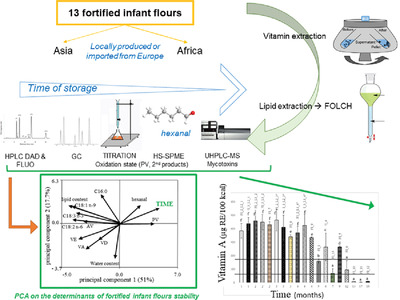
The expiration dates for fortified infant flours (FI) commercialized in low-income countries should be shortened from 36 to 12 months so as to guarantee the nutritional quality of these functional foods and to abide by the fortified infant flour legislation. The use of high barrier packaging materials must be generalized, although it is a necessary criterion but not sufficient to ensure the long-term stability of FI.
Corrosion Behavior of Bitter Almond Oil During Processing
- First Published: 28 August 2019
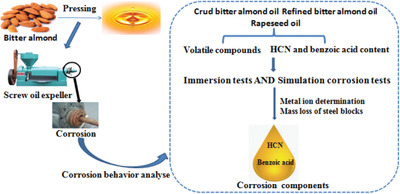
The corrosion behavior of bitter almond oil (BAO) that occurs in oil press during BAO production is studied. Crude bitter almond oil (CBAO), refined bitter almond oil (RBAO), and rapeseed oil are selected to determine the cause of corrosion and immersion tests and simulation corrosion tests are carried out. Hydrocyanic acid in CBAO is the main cause of screw oil expeller corrosion in BAO processing, and benzoic acid is a secondary cause.
Excellent Properties of Dimer Fatty Acid Esters as Biolubricant Produced by Catalyst- and Solvent-Free Esterification
- First Published: 25 September 2019

A green technology is developed to produce a biolubricant, dimer fatty acid ester (DFAE) derived from C36 dimer acid without the need for catalyst and organic solvent. The synthesized DFAE exhibits excellent cold flow properties (pour point and cloud point) and high viscosity index suitable for operation at extremely low temperature conditions.
Cross-Linking of Polyesters Based on Fatty Acids
- First Published: 30 August 2019
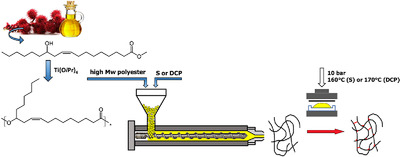
This study aims at obtaining bio-based cross-linked polymers. One-pot polyesterification of methyl ricinoleate and methyl 12-hydroxystearate has been performed leading to polyesters known as estolides, which have been successfully cross-linked. The so-formed bio-based elastomers exhibit promising properties and show high thermal stability, tailored physico-mechanical properties, and good tensile strength.
Short Communication
Physical, Chemical, and Biological Characterization of Veiled Extra Virgin Olive Oil Turbidity for Degradation Risk Assessment
- First Published: 29 August 2019
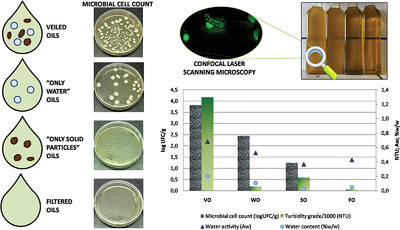
Microbial cell count, water content, water activity, and degree of turbidity are determined to understand the role of turbidity and microorganisms in veiled extra virgin olive oil. Confocal laser scanning microscopy experiments permit the observation of the morphology of the solid particles dispersed inside the organic matrix and the distribution of water inside the oil samples.





